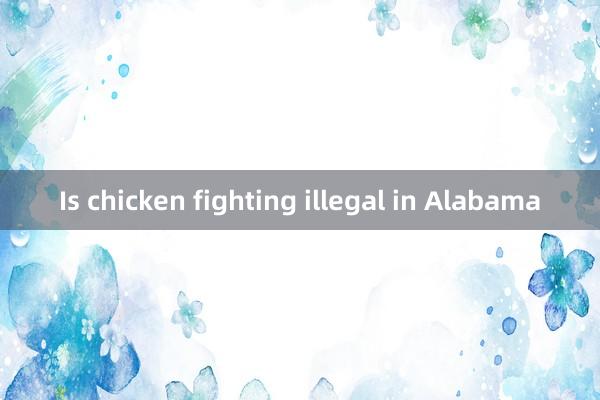Exploring the Enchanting World of Coral Gaps_ A Deep Dive into Oceanic Mysteries


Coral reefs are often called the "rainforests of the sea," vital for marine life and biodiversity. But within these underwater jungles, there are mysterious areas known as the "coral gaps" or "mga puwang ng coral" that play a crucial role in sustaining marine ecosystems. This article will delve into the importance, scientific discovery, and preservation of coral gaps, shedding light on their unique role in maintaining ocean health.
Coral Gaps, Mga Puwang ng Coral, Coral Reefs, Marine Biodiversity, Ocean Ecosystems, Marine Conservation, Coral Bleaching, Ocean Exploration, Marine Science, Coral Protection.
The Secret Life of Coral Gaps
Coral reefs are among the most diverse and productive ecosystems on Earth. They support countless species, from the smallest plankton to majestic sea turtles and the elusive sharks. But beneath the surface, coral ecosystems are more than just colorful, thriving communities—they contain hidden mysteries and essential features that contribute to their health and survival. One of the most intriguing aspects of coral reefs are the so-called "coral gaps," or "mga puwang ng coral." These areas are often misunderstood or overlooked, but they play a crucial role in the broader reef ecosystem.
What Are Coral Gaps?
Coral gaps are essentially areas between coral structures where the reef is not fully covered by coral growth. These gaps may seem like barren spaces, devoid of life, but they are far from it. In fact, coral gaps are vital for the reef's overall health. They allow for the free flow of water, which is essential for maintaining nutrient cycles and oxygenation. These areas are often filled with soft corals, sponges, algae, and other types of marine life that rely on the more open spaces to thrive.
The concept of coral gaps is particularly important when studying coral reef resilience and regeneration. While coral reefs are often portrayed as densely packed structures, a closer look reveals that their survival depends on a variety of microhabitats, including the coral gaps. These spaces may seem unremarkable, but they provide essential niches for various species, and they act as buffers against extreme environmental conditions.
The Role of Coral Gaps in Biodiversity
One of the most significant aspects of coral gaps is their role in fostering marine biodiversity. Coral gaps are not just empty spaces—they are teeming with life. Small fish, invertebrates, and crustaceans make their homes in these gaps, which often serve as refuges from predators. These gaps are also important for juvenile fish, go88 tài xỉu offering shelter and food until they are strong enough to venture out into the more exposed sections of the reef.
Moreover, phim rule 34 coral gaps can act as breeding grounds for certain species of marine organisms. The lack of dense coral growth in these areas allows for greater water movement,chich69 which can be advantageous for the reproduction and dispersal of larvae. In this way, coral gaps contribute to the genetic diversity of reef populations, which is crucial for the long-term survival of marine species.
The species that thrive in coral gaps are often specialized and highly adapted to the unique conditions found in these spaces. For example, certain types of fish are known to favor the relatively calm waters in coral gaps, where they can find food in abundance without the strong currents present in the open reef. Additionally, some species of coral themselves can grow better in the open spaces provided by coral gaps, as they require less direct competition for sunlight and nutrients.
Coral Gaps and Reef Resilience
Coral reefs face numerous challenges, from climate change and ocean acidification to overfishing and pollution. Despite these threats, some coral reefs are more resilient than others. A key factor in this resilience is the presence of coral gaps. These gaps provide a degree of flexibility and adaptability for the entire reef system. When corals in more densely populated areas are damaged or die due to environmental stressors, the gaps can act as refuges where new coral species can grow and replenish the ecosystem.
The ability of coral reefs to regenerate is essential for their long-term survival. Coral gaps play a critical role in this process, as they provide the space needed for coral larvae to settle and grow. Without these gaps, the process of reef recovery would be significantly slowed, making it harder for coral reefs to bounce back after disturbances.
Furthermore, coral gaps are integral to the health of the entire marine ecosystem. They help to maintain a balance between different species by offering alternative habitats and resources. In this way, coral gaps are not just essential for the reef itself, but also for the broader ocean ecosystem that depends on it.
The Impact of Coral Bleaching
One of the most pressing threats to coral reefs today is coral bleaching, a phenomenon that occurs when corals expel the algae living within their tissues due to stress from rising sea temperatures or other environmental factors. This leads to the corals turning white and becoming more susceptible to disease and death.
go88 tài xỉu vipInterestingly, coral gaps may offer some protection against bleaching. Research suggests that coral gaps, with their varying water conditions and less intense exposure to sunlight, might be less vulnerable to the effects of bleaching than the more densely populated sections of the reef. In these areas, corals can survive better by relying on different types of symbiotic algae that are more resistant to temperature fluctuations. Additionally, coral gaps may act as refuges where corals can recover and repopulate the damaged sections of the reef.
The resilience of coral gaps in the face of bleaching highlights their importance as a sanctuary for reef biodiversity. As ocean temperatures continue to rise due to climate change, understanding the role of coral gaps will be essential in developing strategies to protect and preserve coral reefs for future generations.
Protecting Coral Gaps for Future Generations
While coral gaps are crucial for the survival and regeneration of coral reefs, they are not immune to the growing threats posed by human activity. Overfishing, pollution, coastal development, and climate change are all contributing to the degradation of coral ecosystems worldwide. Without proper management and conservation efforts, coral gaps—and the entire reef system—could face irreversible damage. Therefore, it is essential to raise awareness about the importance of coral gaps and implement strategies to protect these vital marine environments.
Human Impact on Coral Gaps
Human activities have had a profound effect on coral reefs, and by extension, coral gaps. Pollution, especially from plastics and agricultural runoff, can smother coral reefs and disrupt the delicate balance of the ecosystem. Sediment runoff from coastal development and deforestation can also block sunlight from reaching the corals, inhibiting their growth. Additionally, overfishing and destructive fishing practices, such as blast fishing, can damage coral reefs and destroy the habitats that marine species depend on.
Climate change is another significant threat to coral reefs, with rising sea temperatures causing widespread coral bleaching and ocean acidification making it more difficult for corals to build their calcium carbonate skeletons. Coral gaps, being less densely populated than other areas of the reef, may be more vulnerable to these changes, as they may not have the same level of protection or support as other areas.
To ensure the survival of coral gaps, it is essential that we address the root causes of reef degradation. This includes reducing carbon emissions to combat climate change, implementing sustainable fishing practices, and limiting pollution and coastal development. By protecting the broader coral ecosystem, we can also safeguard the coral gaps that are so crucial to the health of the reef.
Conservation Efforts: A Global Responsibility
Coral conservation is a global issue that requires international cooperation and action. Many countries have already established marine protected areas (MPAs) to safeguard coral reefs and their associated ecosystems, including coral gaps. These protected areas help to reduce the impact of human activities on coral reefs and provide a safe space for marine life to thrive.
In addition to MPAs, researchers and conservationists are working to develop coral restoration techniques, such as coral farming and transplantation. These techniques aim to regenerate damaged coral reefs by growing coral in nurseries and then transplanting it onto the reef. Coral gaps can be targeted as restoration sites, as they provide the space needed for new corals to settle and grow.
Furthermore, there is a growing movement to raise public awareness about the importance of coral reefs and the threats they face. Education campaigns, citizen science initiatives, and eco-tourism programs are helping to engage people in coral conservation efforts. The more people understand the vital role that coral reefs—and by extension, coral gaps—play in the health of the ocean, the more likely they are to take action to protect them.
The Future of Coral Gaps and Reef Resilience
The future of coral reefs—and the coral gaps that sustain them—depends on our ability to act now to protect these ecosystems. While coral reefs are facing unprecedented challenges, they are not beyond hope. With continued research, conservation efforts, and a commitment to reducing human impact, coral gaps can continue to serve as refuges for marine life and as crucial components of reef regeneration.
As we move forward, it is essential that we view coral gaps not just as empty spaces but as integral parts of the reef ecosystem. By understanding their role and protecting them, we can help ensure that future generations will be able to experience the wonder and beauty of coral reefs, as well as the vibrant marine life that they support.
The fate of coral reefs is in our hands. By focusing on the protection and preservation of coral gaps, we can help to create a more sustainable and resilient future for these incredible underwater ecosystems.
By understanding the vital role of coral gaps and actively working to preserve them, we can ensure that coral reefs continue to thrive for generations to come. The mysteries of the ocean are waiting to be uncovered—if we only take the time to explore and protect them.






